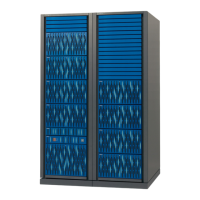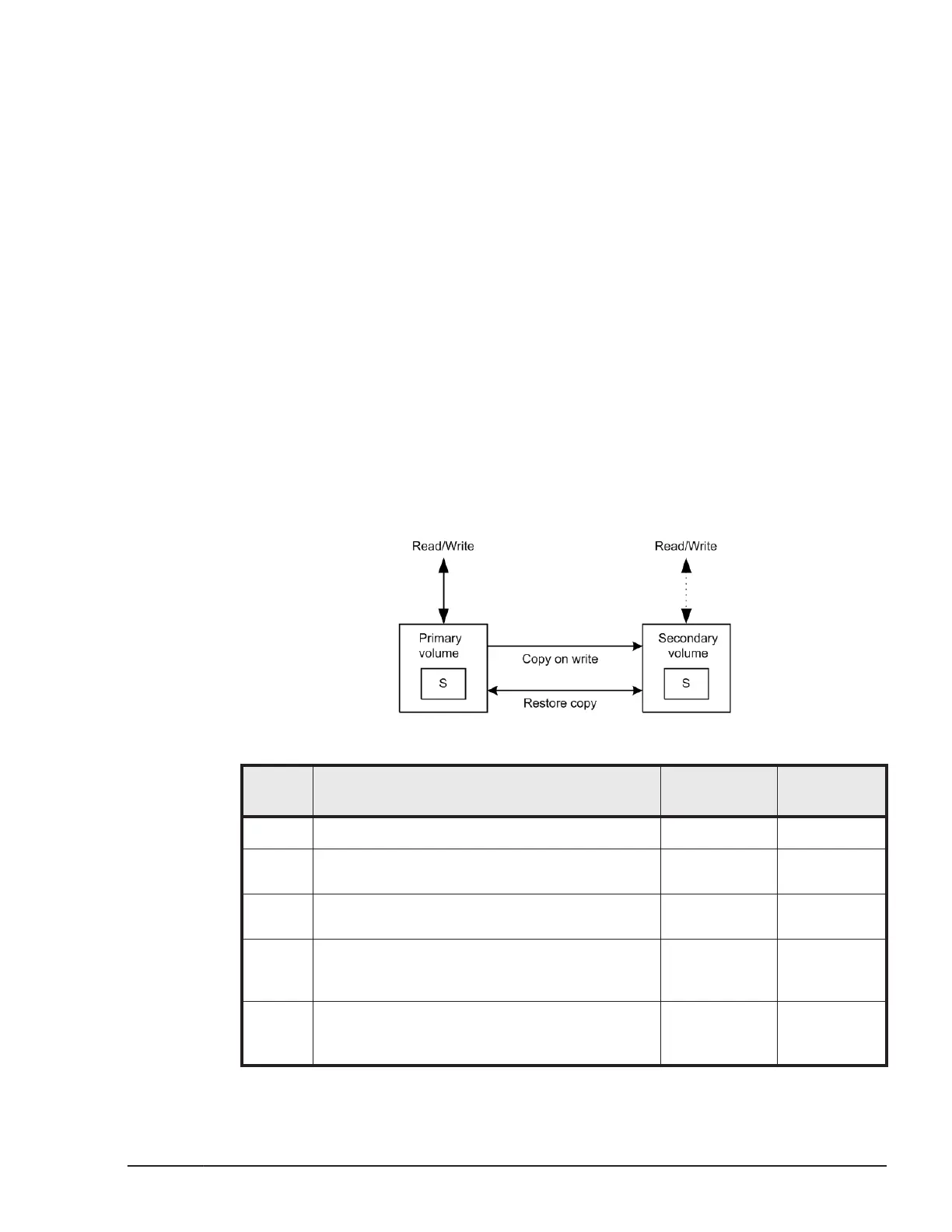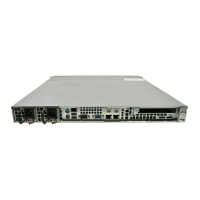A Copy-on-Write Snapshot pair is generated in the following two cases:
• When a V-VOL (OPEN-0V) is specified as an S-VOL.
• When a pool for Copy-on-Write Snapshot is specified as the pool type.
A V-VOL has the following characteristics:
• It appears as "OPEN-0V" to identify a V-VOL easily via the SCSI Inquiry or
CCI.
• A V-VOL unmapped to the S-VOL of a Copy-on-Write Snapshot will reply
to a SCSI Inquiry, but Reading and/or Writing is not allowed. LDEV will
reply the capacity setting as an LU to SCSI Read Capacity.
• A V-VOL that has become the S-VOL of a Copy-on-Write Snapshot will
reply to a SCSI Inquiry, and Reading and/or Writing is allowed.
Copy-on-Write Snapshot pair status
Each paired volume consists of a primary volume (P-VOL) and a secondary
volume (S-VOL). Each volume has the status for controlling the pair state.
The P-VOL controls the pair state that is reflected on the status of the S-VOL.
The major pair statuses are "SMPL", "PAIR", "PSUS", "COPY", and "RCPY".
The status is changed when the CCI command is issued. A read or write
request from the host is allowed or rejected according to the status.
Table 6-10 Copy-on-Write Snapshot Pairing Status
P-VOL
Status
Pairing Status Primary Secondary
SMPL Unpaired (Copy-on-Write Snapshot) volume R/W enabled
R/W disable
1
PAIR
(PFUL)
The Copy-on-Write Snapshot available state
allocated the resource.
R/W enabled R/W disable
COPY The preparing state allocates the resource for
the Copy-on-Write Snapshot.
R/W enabled R/W disable
RCPY The copying state from Copy-on-Write
Snapshot to the primary volume by using
restore option.
R/W enabled R/W disable
PSUS
(PFUS)
The differences of the updated data of the
primary and secondary volume are controlled
with copying on write.
R/W enabled R/W enabled
Data replication operations with CCI
6-35
Command Control Interface User and Reference Guide

